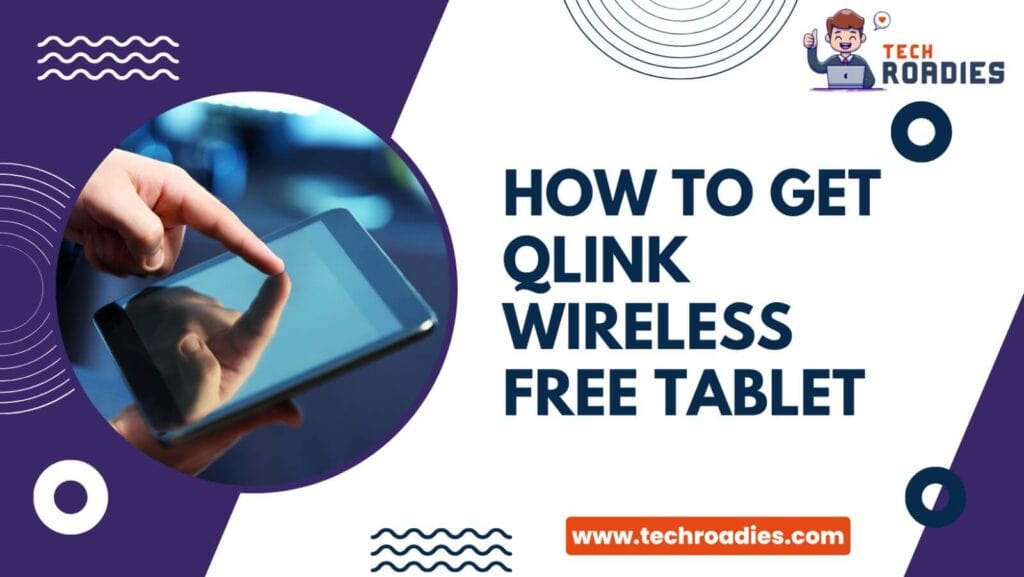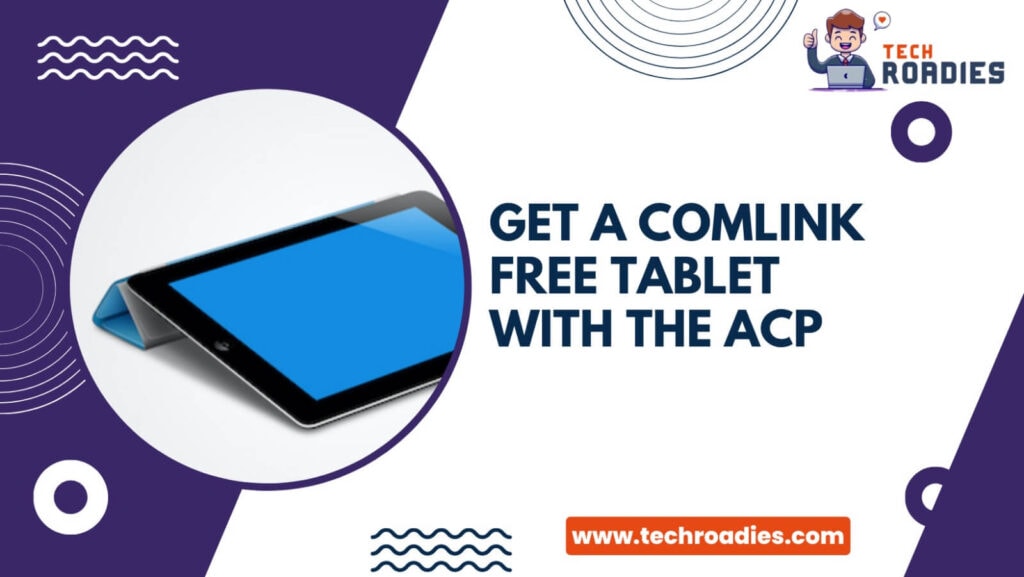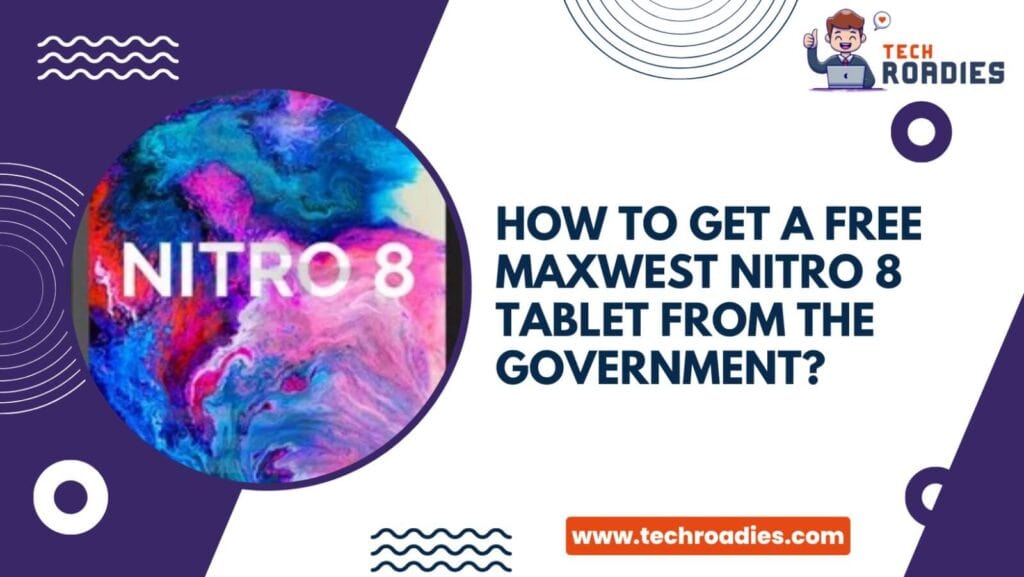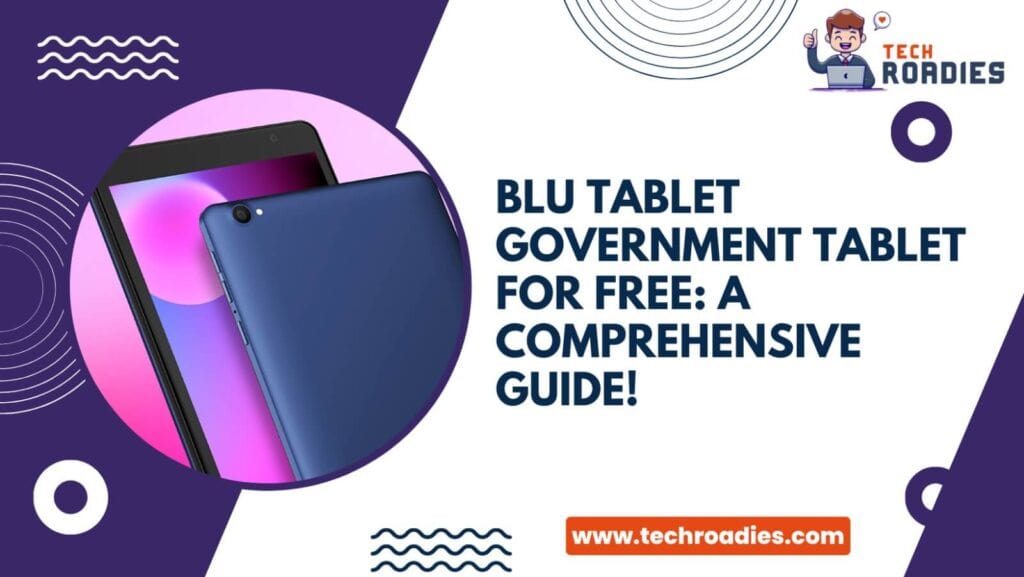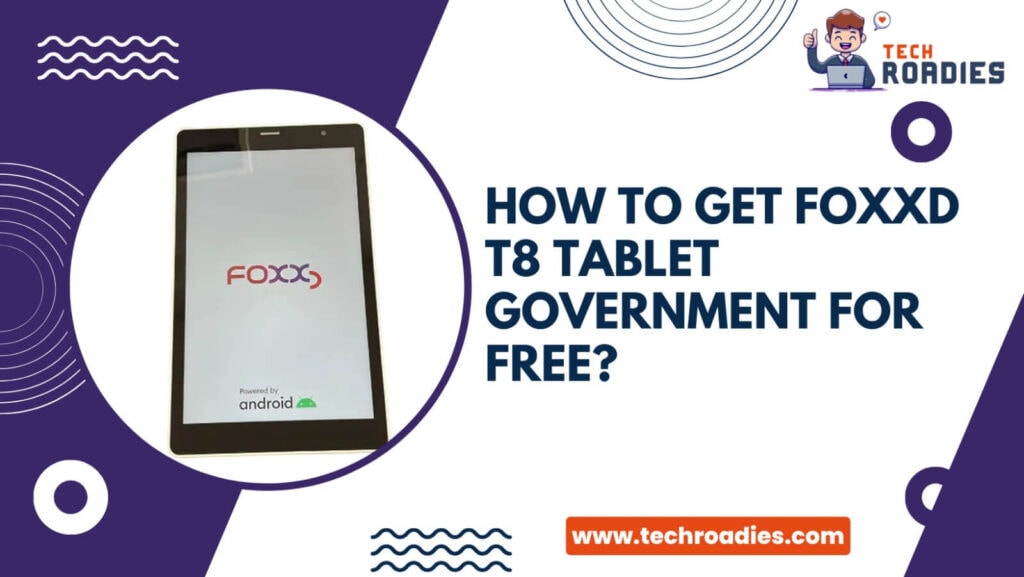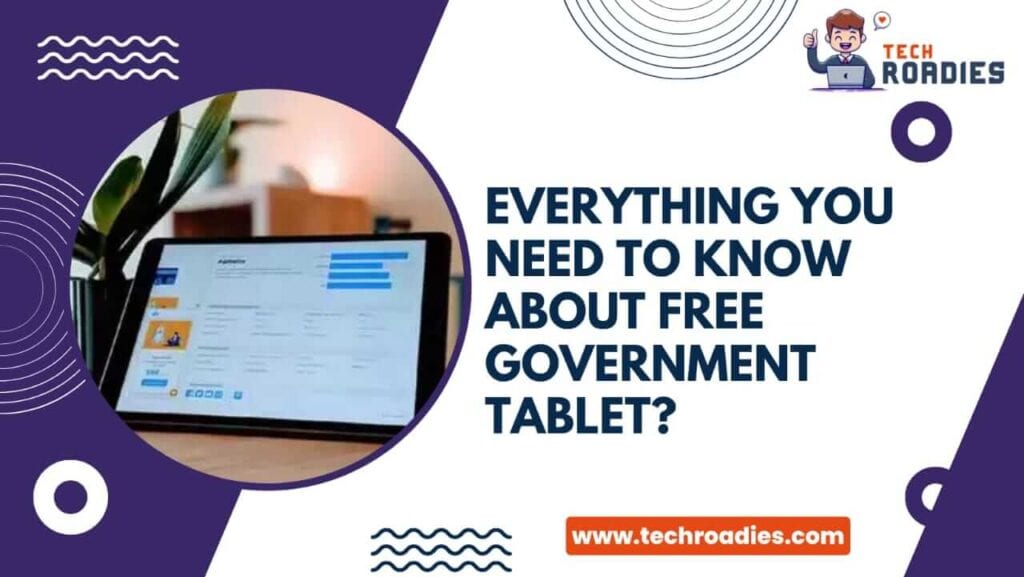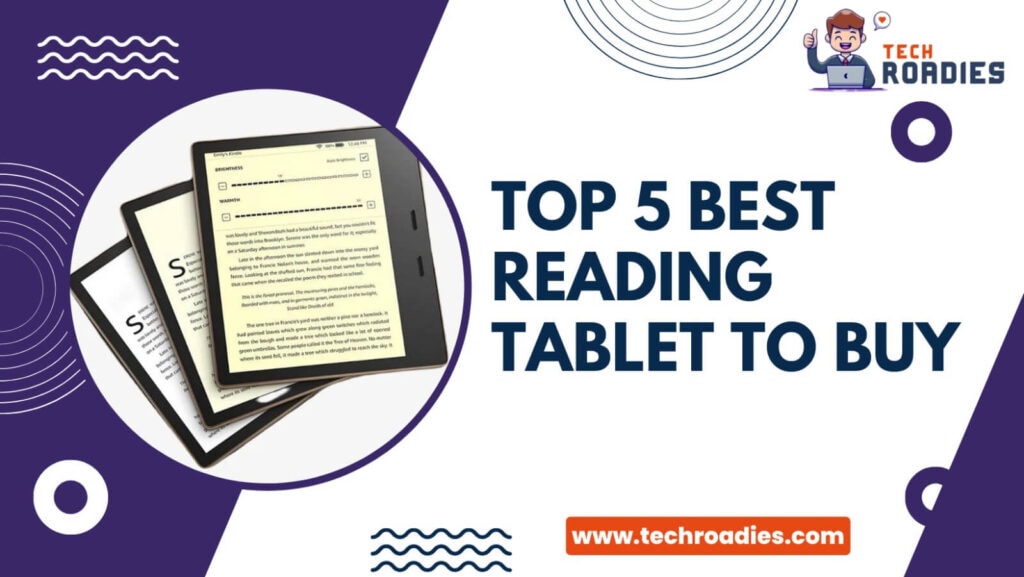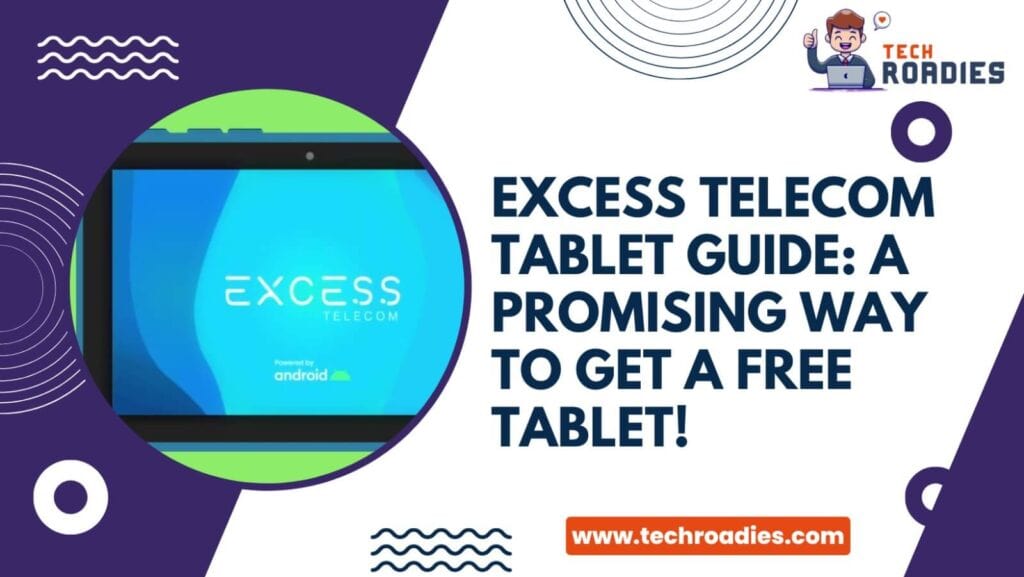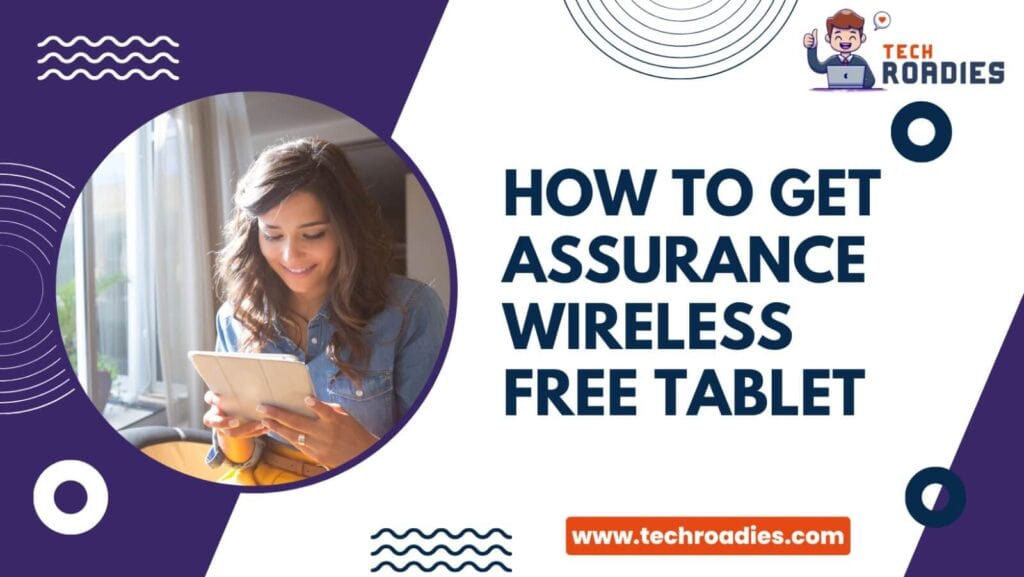In the world of digital connections and new technology, the idea that you might be able to get a Qlink Wireless free tablet in 2024 has gotten a lot of attention. With great pleasure, we would like to provide you with a full guide that explains the ways through which you can acquire the Qlink wireless free tablets.
It is important to understand why does qlink give you a free tablet. This is because it helps in transforming luxury commodities into a means of necessity, devices that help many in accomplishing various personal and professional endeavors. In this particular case, the emergence of the Qlink wireless free tablet facilitates the acquisition of these essential devices without incurring any financial burden.
In this blog, we will provide a detailed explanation of the steps and requirements needed to get a Qlink wireless free tablet. With wise advice and tips, figuring out the application process does not need to be hard. So let us begin.
What Is The Role Of Qlink Wireless Free Government tablet In 2024?
In this evolving digital environment, free government tablet qlink finds its place as an enabler of connectivity.
The extensive implementation of cloud computing has led to a substantial alteration in the dynamics of the Internet. This paradigm encompasses the remote storage of data and applications on servers located at a distance, enabling users to access them via the Internet.
This innovation not only redefines organizational procedures but also enables equitable availability of robust computational resources, without necessitating substantial investments in hardware and infrastructure.
Cloud computing is a transformative technology that revolutionizes the storage of data and programs on remote computers, which can be accessed through the Internet.
How To Get Assurance Wireless Free Tablet 2024
The transformation extends beyond organizational operations, encompassing the democratization of powerful computational resources. Qlink Wireless Free Tablets effectively facilitate individuals in accessing the capabilities of cloud computing. By enabling convenient access to distant servers, these tablets guarantee that individuals lacking costly gear can effectively utilize equivalent functionalities.
The emergence of 5G, the latest generation of mobile networks, provides more support for the transformative potential of the Internet. The advantages of 5G, as leveraged by Qlink Wireless Free Tablets, arise from the utilization of elevated frequency bands.
This results in expedited data transfer and improved performance, particularly in densely populated regions. With the advent of 5G technology, the internet has witnessed significant advancements, enabling it to achieve unprecedented levels of performance. In light of this, Qlink Wireless Free Tablets have fully embraced this potential, providing users with unique opportunities to access information and engage in various experiences.
The fundamental essence of both 5G technology and the discourse about the Internet in 2024 revolves around the notion of the Internet of Things (IoT).
Qlink Wireless Free Tablets serve to enhance this capability by allowing users to access and utilize the vast array of insights and data offered by the Internet of Things (IoT).
The emergence of Qlink Wireless Free Tablets in this particular setting serves as a catalysts for transformative processes. The integration of these resources enhances accessibility to contemporary educational materials and supports the dynamic educational environment.
How To Get Excess Telecom Free Tablet
The tablets serve as a means to embrace progress, ensuring equitable access to educational opportunities for persons from diverse backgrounds. As the Internet of Things and communication technologies continue to reshape the landscape of teaching and learning.
The growing popularity of the Internet has resulted in a heightened need for electronic learning, and it is in this context that Qlink Wireless Free Tablets assume a crucial position. The utilization of these tablets facilitates individuals’ access to digital learning materials and resources, hence enhancing the accessibility and flexibility of education.
The notion of electronic learning sometimes referred to as e-learning, has transformed various settings, with definitions adjusting in tandem with improvements in technology.
Qlink Wireless Free Tablets have emerged as a medium through which the possibilities of e-learning can be actualized, enabling individuals to quickly access and interact with educational materials.
The term “e-learning” encompasses several interpretations depending on the viewpoint, and Qlink Wireless Free Tablets are in perfect harmony with this notion.
Tablets offer instructional designers a platform through which they may engagingly deliver courses and learning materials, assuring the continued relevance and accessibility of education. Corporate trainers have the opportunity to utilize Qlink Wireless Free Tablets as a means of enhancing blended learning, which involves the integration of both in-person and online instructional components.
The tablets’ ability to adapt and perform many functions makes them highly effective instruments for augmenting the educational experience.
The Open Educational Resources (OER) movement has been notably shaped by the presence of Qlink Wireless Free Tablets.
These tablets function as portals to Open Educational Resources (OER), providing users with the ability to freely access a vast array of digital learning materials.
Open Educational Resources (OER) comprises a diverse range of educational materials, including content and teaching tools, which are readily accessible through Qlink Wireless Free Tablets. Consequently, the tablets not only facilitate access to structured educational programs but also enable learners to actively participate in informal and cooperative learning opportunities.
The emergence of Web 2.0 technologies has facilitated a paradigm shift towards social learning, with Qlink Wireless Free Tablets serving as the medium via which learners engage in this revolutionary process. These tablets facilitate user engagement, cooperation, and information exchange within virtual communities.
Qlink Wireless Free Tablets enhance the production of user-generated content, hence promoting a more interactive and engaging learning environment. The utilization of tablets facilitates the establishment of a network of knowledge exchange, hence augmenting the entire process of learning.
Top 5 Best Reading Tablet To Buy In 2024
In anticipation of future developments, Qlink Wireless Free Tablets play a crucial role in the advancement of e-learning, particularly about the Semantic Web or Web 3.0. With the progression of technology, these tablets will persist in serving as a conduit connecting learners to the extensive reservoir of digital information.
Qlink Wireless Free Tablets offer learners the opportunity to have a personal assistant readily available, enabling them to access material within a relevant environment and revolutionizing how education is consumed.
Qlink Wireless Free Tablets contribute to the enrichment of Open Educational Resources by facilitating convenient access to knowledge and active participation in contextual learning opportunities.
Why Is Qlink Wireless Free Tablet Important?
Qlink Wireless Free Tablet seeks to address the digital divide among adolescents by equipping them with vital tools for internet access. We all know the COVID-19 pandemic has increased the importance of these activities, particularly for persons who are socioeconomically disadvantaged and may not have access to the internet otherwise.
However, the help of Qlink Wireless Free Tablet can help in tackling the digital divide. Since they have the potential to alleviate the inequitable availability of internet resources.
Qlink Wireless Free Tablet aims to provide equitable access to essential online information and services. Thereby aiding in the reduction of socio-economic inequalities exacerbated by limited internet connectivity.
This is particularly pertinent for projects such as the “Qlink Wireless Free Tablet,” which affords individuals personal internet access, enabling them to access resources and participate in online activities conveniently within their residences.
Initiatives such as the “Qlink Wireless Free Tablet” can have a significant impact in offering a more extensive option for internet access. The option provided might surpass the constraints of smartphones by providing Qlink wireless free tablet and phone.
The discrepancies in digital accessibility are consistent with pre-existing health disparities, notably in areas with a greater incidence of COVID-19 infection and mortality, which can be attributable to socioeconomic disparities.
To tackle this difficulty, the implementation of programs such as the provision of Qlink wireless free tablets to marginalized communities could serve as a crucial factor in mitigating the digital gap and enhancing the availability of telehealth services.
Resolving this matter necessitates the implementation of a comprehensive and multidimensional strategy. The use of Qlink wireless free tablets within these initiatives can successfully facilitate the participation of persons without access to devices in telehealth services.
AT&T TV Full Channel List | Packages | Pricing
The equitable availability of technological gadgets is of paramount importance. Enhanced accessibility to telehealth engagement devices is crucial for marginalized communities.
The outbreak of the pandemic has led to the implementation of several measures, such as the provision of Qlink wireless tablets to students in New York City, to address the educational disparity caused by limited access to digital resources.
The integration of Qlink wireless free tablets inside these distribution initiatives can effectively tackle the issue of limited device accessibility among marginalized communities.
The inclusion of Qlink WiFi free tablets can enhance these endeavors by providing a medium for individuals to access materials and participate in virtual health exchanges.
The incorporation of Qlink wireless free tablets into healthcare facilities can effectively address the need for patients to have access to essential resources for virtual consultations, while simultaneously recognizing the need for in-person care in specific clinical contexts.
What Is The Affordable Connectivity Program?
The Affordable Connectivity Program refers to a specific initiative aimed at providing accessible and affordable internet connectivity to individuals and communities.
To comprehend the rationale for the provision of complimentary tablets by the government through Assurance Wireless, it is imperative to delve into the underlying factors. It is imperative to familiarize oneself with the Affordable Connectivity Program implemented by the Federal Government.
The Affordable Connectivity Program (ACP) is a notable endeavor aimed at providing affordable internet connections to eligible consumers, thereby mitigating financial constraints.
The primary objective is to mitigate the digital divide and facilitate greater inclusion of persons within the digital realm. The inclusion of Qlink Wireless Free Tablets is an integral component of this campaign.
The ACP, which formed as a result of the passing of the Infrastructure Investment and Jobs Act in late 2021, may be traced back to the previous Emergency Broadband Benefit Program (EBB).
The ACP is a further development and expansion of the EBB, which was created in 2020 to provide financial support for disadvantaged individuals in accessing internet services amid the COVID-19 pandemic. The Qlink Wireless Free Tablet serves as the primary offering of the ACP.
Under this project, Cable Internet Service Providers are providing high-speed internet packages for a cost of $30 per month for general consumers and $75 per month for persons residing in Tribal Lands.
As of February 6, 2023, the number of American families enrolled in the ACP exceeded 16 million, representing a significant advancement.
The announcement was made by the Universal Service Administrative Company. The substantial level of engagement observed underscores the significance and efficacy of the initiative in tackling the matter of digital accessibility.
The COVID-19 outbreak brought about substantial changes to the realm of telecommunications support programs designed for individuals with low incomes.
The COVID-19 pandemic has prompted a transition to online activities, raising worries about the digital divide among economically disadvantaged families who face challenges in accessing affordable internet services. In answer, the US Congress set up the Emergency Broadband Benefit (EBB) program.
This project cost a lot of money—$3.2 billion—because it was meant to help low-income homes and families get access to internet services by giving them a $50 monthly subsidy.
In a further development in 2021, the Infrastructure Investment and Jobs Act designated a sum of $14 billion for the alteration of the EBB program.
Thus, resulting in its rebranding as the Affordable Connectivity Program (ACP). The aforementioned scheme, albeit providing a lesser subsidy in comparison to the temporary Emergency Broadband Benefit (EBB), signifies a significant augmentation in benefits when contrasted with the Lifeline program. The ACP offers a monthly stipend of $30 to a wider array of beneficiaries.
The determination of eligibility for ACP benefits is contingent upon household income being below 200 percent of the federal poverty limits or active engagement in other federal antipoverty activities.
The program provides support to individuals who are beneficiaries of other government programs, including Qlink Wireless Free Tablet, the National School Lunch Program, the Special Supplemental Nutrition Program for Women, Infants, and Children, as well as recipients of federal Pell Grants.
In addition, it is important to note that the Qlink Wireless Free Tablet is provided through the Accessible Communications for People (ACP) program, which functions as a designated component within the federal budget. As such, it is subject to the customary appropriations process and legislative supervision.
Notwithstanding these advancements, the Affordable Care Program (ACP) shares a key limitation with Lifeline, namely the provision of monthly financial assistance to a diverse range of beneficiaries, contingent upon their income levels or involvement in other federal initiatives.
This strategy posits the assumption that the provision of these subsidies will lead to a rise in the rates of broadband uptake among families with low incomes.
Nevertheless, advocates of ACP have yet to conduct thorough research on the specific demographic in question to ascertain the primary variables that contribute to the lack of adoption among individuals with low incomes.
In response to these issues, the United States Government has established a more effectively designed low-income aid program known as the Qlink Wireless Free Tablet. This approach will enable policymakers to get insights into the specific features of these households and the obstacles they face in adopting broadband technology.
The provided information could be utilized to develop qualifying criteria that are specifically tailored to target non-adopters. In addition, it is imperative to conduct a thorough investigation that encompasses the extent of the broadband adoption issue inside low-income households, while also establishing whether affordability or other variables serve as the predominant catalysts for non-adoption.
the Qlink Wireless Free Tablet This mechanism serves to empower customers, foster competition, and reduce the disparity in purchasing power among low-income households.
How Can Qlink Wireless Free Tablets And ACP Help Improve Connectivity?
The digital environment in the United States of America exhibits a dynamic and diverse array of connectivity, interactivity, and prospects. At the onset of the calendar year, the United States exhibited a considerable populace of internet users, amounting to 311.3 million individuals, consequently resulting in a noteworthy rate of internet penetration at 91.8 percent.
However, the implementation of Qlink Wireless Free Tablets has significantly enhanced connectivity, allowing individuals from various socio-economic backgrounds to access a wide range of online resources and services. Qlink Wireless Free Tablets facilitate user engagement with many online platforms, hence fostering diverse community debates.
The provision of Qlink Wireless Free Tablets has undeniably played a significant role in facilitating users’ access to information, fostering connectivity, and enabling their active engagement in digital conversations. Qlink Wireless Free Tablets facilitate access to digital experiences, encompassing educational resources, entertainment, and communication tools, among individuals spanning various age cohorts.
The internet penetration rate has achieved a notable milestone of 91.8 percent, indicating extensive access aided by initiatives such as Qlink Wireless Free Tablets. Qlink Wireless Free Tablets contribute to the advancement of technology by providing access to improved connectivity.
These initiatives aim to enhance the availability of high-speed internet and affordable services, enabling universal participation in the digital era, including individuals benefiting from Qlink Wireless Free Tablets.
What Are The Eligibility Criteria For Qlink Wireless Free Tablets?
To qualify for the Qlink wireless free tablet offer, there are certain criteria you need to meet. The general terms set by the provider include being 18 years or older and being a permanent resident of the United States. Once you meet these initial requirements, you can then check the specific eligibility criteria for the Qlink Wireless Free Tablet program.
Income eligibility is a determining factor for individuals seeking qualification for the Qlink Wireless Free Tablet. Individuals whose household income falls below 200% of the Federal Poverty Guidelines may potentially qualify for participation in the program.
Individuals who are currently enrolled in specific government assistance programs may also be eligible for automatic qualification for the Qlink Wireless Free Tablet program.
Programs that meet eligibility criteria include :-
- The Lifeline Assistance Program
- Medicaid and Temporary Assistance for Needy Families (TANF)
- The Veterans Survivors Pension Benefits Fund
To participate in the Qlink Wireless Free Tablet program, applicants will need to submit specific documentation as evidence of their eligibility.
- It is necessary to provide a birth certificate as a means of verifying that the individual is of legal age, specifically 18 years or older.
- The submission of an authoritative document validating that the household income falls within or below 200% of the Federal Poverty Regulations shall be necessary.
- The submission of identification verification documents is required to authenticate your identity.
- To authenticate your address, it is necessary to furnish paperwork that demonstrates your present place of residence.
By adhering to the specified criteria and providing the requisite documentation, individuals can become eligible for participation in the Qlink Wireless Free Tablet program. It is imperative to thoroughly assess the qualifying criteria and compile the necessary documentation to facilitate a seamless application procedure.
How To Get A Free Tablet From Qlink?
To acquire a Qlink Wireless Free Tablet, one can initiate the procedure by undertaking the subsequent actions :-
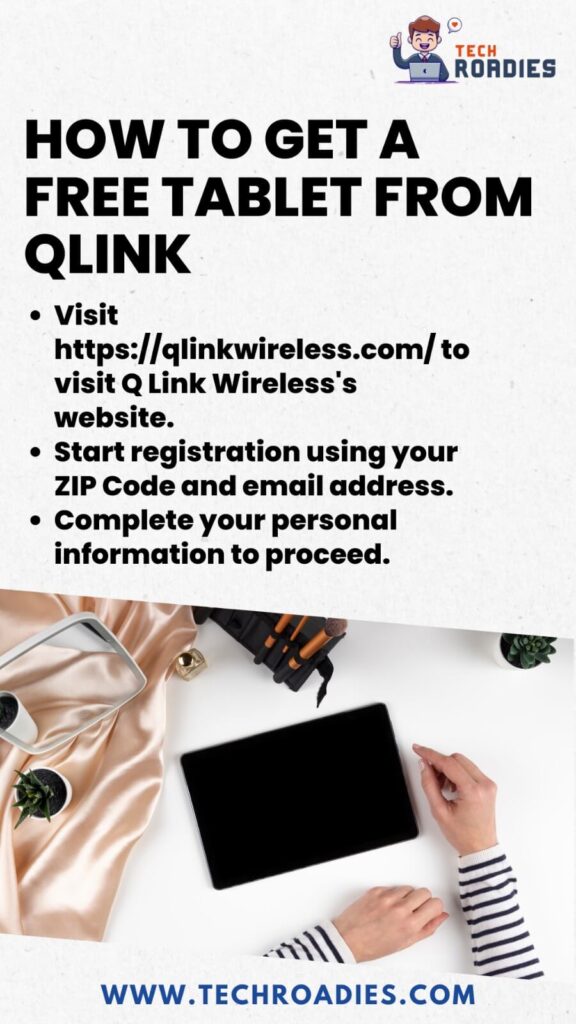
- Visit https://qlinkwireless.com/ to visit Q Link Wireless’s website.
- Start registration using your ZIP Code and email address.
- Complete your personal information to proceed.
Once the application has been completed and all the necessary documentation has been submitted, an eligibility assessment will be conducted to determine the applicant’s eligibility. The acquisition of a Qlink free tablet application is contingent upon meeting the specified eligibility criteria.
The application process for the Qlink Wireless Free Tablet is straightforward. The Qlink Wireless Free Tablet application can be found at qlinkwireless.com/signup/g-6-717.
After submitting the form, you will be notified of your program eligibility. It’s crucial to include accurate and current information when applying to help evaluate and approve one’s proposal.
What Kind Of Tablet Does Qlink Wireless Have?
Qlink Wireless is giving new and existing customers free tablets. This includes the latest Qlink Tab S2 and earlier Tab A10 versions. The Wi-Fi and 4G/LTE variants of these tablets can be used with any Qlink wireless plan. This offer is valid in the US for those who are eligible for the ACP program.
To maximize your usage of the free tablet, here are some helpful tips:
- Setting up a customized account on the tablet can grant you access to more features and content, enhancing your overall experience.
- Utilize the tablet for streaming videos and music to save on data charges associated with your wireless plan.
- Stay in touch with family and friends through various communication apps available on the tablet.
- Use the tablet to plan your work calendar and appointments.
- Learn with educational apps, ebooks, and online classes on your tablet.
If you have issues with your free tablet, Qlink Wireless offers support. Simply use these avenues to reach their customer service team :-
- Phone: 1-855-922-4688
- Chat: Access the chat icon on the Qlink Wireless website.
- Email: Send an email to [email protected].
- Website: Visit the Qlink Wireless website and click on the “Support” link.
For troubleshooting tips related to the free tablet offer :-
- Ensure Qlink Wireless is activated on your account to access the free tablet.
- If you face network connectivity issues, try turning your device off and on, switching to a different network, or adjusting wireless settings.
- If problems persist, contact Qlink Wireless customer service for a resolution.
By following these steps and utilizing the provided support channels, you can make the most of the Qlink Wireless free tablet offer and enjoy a seamless experience with your new device.
Conclusion :-
Through Qlink Wireless Free Tablets, individuals from various socio-economic backgrounds gain access to a wide array of online resources, ranging from educational materials to entertainment and communication tools.
This accessibility is especially significant given the rapid expansion of internet penetration, the prevalence of social media engagement, and the ubiquity of mobile devices. These tablets empower users to engage actively in digital conversations, connect with communities, and enhance their overall online experience.
Understanding the eligibility criteria for Qlink Wireless Free Tablets is essential for those seeking to benefit from this program. Factors such as age, income, and participation in government assistance programs play a pivotal role in determining eligibility.
The application process is straightforward and accessible through the Qlink Wireless website. By adhering to the specific criteria and providing the necessary documentation, individuals can unlock the potential of these tablets, enhancing their digital experiences and opportunities.
In a world where digital connectivity is integral to daily life, initiatives like Qlink Wireless Free Tablets and the Affordable Connectivity Program (ACP) play a significant role in ensuring that every individual has the opportunity to participate in the digital revolution.
As we move forward, these efforts must continue to evolve, adapt, and expand, fostering a more inclusive and connected society for all.
Frequently Asked Questions
Is qlink giving free tablets?
Yes, Qlink Wireless is providing free tablets through the ACP program. You need to qualify for the ACP program to be eligible for the tablets.
Who is eligible for the Affordable Connectivity Program?
The eligibility criteria for the Affordable Connectivity Program are as follows :-
- Your household income must be at or below 200% of the federal poverty level.
- You must participate in certain government assistance programs, such as the Supplemental Nutrition Assistance Program (SNAP) or the National School Lunch Program.
- You must be a veteran or active-duty military member.
- You must be a member of a Tribal household.
What is the maximum discount I can receive?
To get a free tablet from Qlink Wireless, you need to meet the following eligibility requirements :-
- Be a resident of the United States.
- Be at least 18 years old.
- Have an income that is at or below 200% of the federal poverty level.
What kind of tablet does Qlink Wireless have?
Qlink Wireless offers two types of tablets: the Qlink Tab S2 and the Qlink Tab A10.
The Qlink Tab S2 is a 10.1-inch tablet with a 1280 x 800 resolution display. It is powered by a MediaTek MT8167B processor and has 2GB of RAM and 32GB of storage. It also has a 5MP rear camera and a 2MP front-facing camera.
The Qlink Tab A10 is a 7-inch tablet with a 1024 x 600 resolution display. It is powered by a MediaTek MT8163 processor and has 1GB of RAM and 16GB of storage. It also has a 2MP rear camera and a 0.3MP front-facing camera.
How do I get my free tablet from Qlink Wireless?
To get a Qlink Wireless Free Tablet, follow these steps :-
- Q Link Wireless’ website is https://qlinkwireless.com/.
- Register using your ZIP Code and email.
- Complete personal information to continue.
- After submitting the application and supporting documents, the applicant’s eligibility will be assessed. Free Qlink tablet apps are available to those who meet the requirements.
The Qlink Wireless Free Tablet application is simple. The Qlink Wireless Free Tablet app is at qlinkwireless.com/signup/g-6-717.
Your program eligibility will be confirmed after submitting the form. Application information must be accurate and current to assist, analyze, and approve a proposal.

